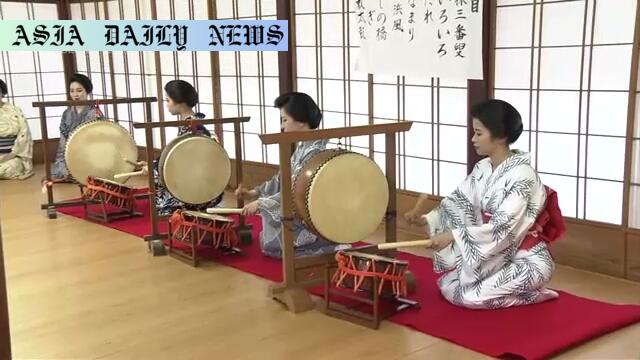Geigi Performance – Rare Public View of Traditional Arts

Introduction to Kanazawa’s Teahouse Districts
In the heart of Kanazawa City, located along the coast of the Sea of Japan, lies a rich cultural history that is slowly being preserved and shared with the world. The three teahouse districts of Kanazawa – Higashi, Nishi, and Kazuemachi – are home to a wealth of traditional artistry, primarily led by talented geigi (known as geisha in most regions). These districts have long been celebrated for their refined banquets, music, and performances that date back centuries. What sets Kanazawa apart is not just its commitment to preserving these traditions but the rare opportunity it offers the public to witness the training that goes into becoming a geigi. Recently, eager tourists and locals alike were invited to observe the intricate preparation and rehearsal sessions of these accomplished performers.
The Rare Opportunity to Witness Geigi Performances
On a recent Saturday at the Higashi teahouse district, about 20 individuals had the privilege of attending live training sessions by a group of 12 geigi dressed in casual yukata (summer kimono). This was no ordinary performance; it was a glimpse into the intense training involved in mastering the traditional art forms. Seated in an intimate training venue, the audience watched spellbound as the geigi played traditional instruments such as the shamisen, a three-stringed lute-like instrument, and small drums. The performers also captivated their audience with intricate traditional dances accompanied by music, inviting rounds of enthusiastic applause.
Interactive Cultural Immersion
One of the unique aspects of this session was its interactive nature. The participants were not mere spectators; they were invited to try playing the small drum instruments themselves. Under the watchful guidance of the geigi, participants enthusiastically engaged in recreating specific drum rhythms as part of a traditional banquet game. This immersive experience allowed attendees from different cultural backgrounds to personally connect with Japanese traditions.
Visitors Share Their Experience
A local woman in her sixties, experiencing a live geigi performance for the first time, noted how much she enjoyed witnessing the art. Similarly, a visitor from Germany living in Kanazawa expressed appreciation for the cultural insight, saying it offered her a newfound perspective on Japanese traditions. She even mentioned her eagerness to introduce her visiting family and friends to this cultural treasure. Such testimonials reveal the cultural exchange and emotional connection sparked by the program.
Kanazawa: A Cultural Heritage Worth Preserving
This rare occasion underscores Kanazawa’s dedication to preserving and promoting its teahouse culture while making it more accessible to a global audience. The efforts to invite tourists and locals to experience geigi training illuminate the passion of these performers and the city’s investment in safeguarding its unique traditions. The program not only serves as entertainment but also as an educational initiative, fostering appreciation for the meticulous work that goes into the preservation of art forms that are centuries old.
Conclusion
Kanazawa’s initiative to open up its teahouse district to the public offers a chance to merge historical appreciation with modern curiosity. It reminds us of the importance of preserving cultural treasures and promotes a deeper cross-cultural understanding. If you wish to witness Japan’s historical and artistic beauty come alive, Kanazawa’s teahouse districts are a must-visit, offering profound experiences steeped in elegance and tradition.
Commentary
The Beauty of Kanazawa’s Cultural Heritage
Kanazawa’s geigi performances are a testament to the city’s commitment to preserving traditions that have stood the test of time. As someone deeply interested in cultural heritage, I find it heartening to see efforts being made to sustain such art forms. The idea of opening up these performances to the public not only enriches the visitors’ understanding but also bridges the gap between the past and the present. Watching skilled geigi meticulously recreate age-old musical and dance forms must be a transformative experience for any observer.
An Immersive and Interactive Experience
What strikes me most about this initiative is its interactive nature. Allowing participants to play traditional instruments and engage in ceremonial games breathes life into the art forms. It breaks down barriers that often exist between performers and audience members, creating an inclusive environment for cultural exchange. This is crucial for promoting understanding and appreciation of such unique traditions, especially among younger generations and international audiences unfamiliar with the culture.
A Lesson in Conservation
The program also serves as a reminder about the importance of cultural conservation. In a rapidly globalizing world, preserving local traditions often takes a backseat to modernization. However, cities like Kanazawa prove that heritage and modernity can coexist. Their efforts to share, educate, and immerse visitors in such traditions not only preserve the art but also give it renewed purpose in a contemporary setting. This is a lesson that cities worldwide can draw inspiration from.
A Unique and Enriching Culture
To anyone visiting Kanazawa, attending a geigi session appears to be a must. It offers cultural, historical, and artistic insights that are hard to imitate elsewhere. These performances encapsulate centuries of Japanese refinement and the incredible dedication of its practitioners. Initiatives like these remind us of the enduring power of art and tradition to connect, inspire, and educate across generations.


